Review: Samsung Galaxy Prevail LTE for Boost Mobile
Feb 10, 2015, 5:00 PM by Eric M. Zeman
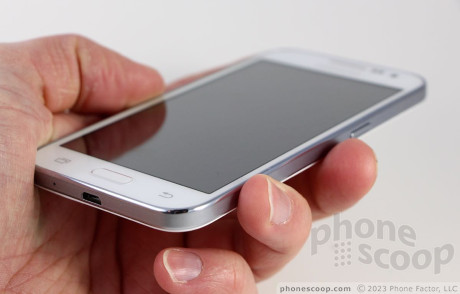
Samsung churns out another entry-level Android handset for Boost Mobile's prepaid service. The Galaxy Prevail LTE is an updated handset that improves upon its predecessor's specs while maintaining a low price point.
Form
Is It Your Type?
The Samsung Galaxy Prevail LTE falls about in the middle of Boost's lineup of prepaid phones. If you're looking for something better than entry-level, but don't have the cash for a high-end device, the Prevail LTE covers most bases at a reasonable cost.
(Virgin Mobile and other carriers are selling the Prevail LTE as the Galaxy Core Prime. The name may be different, but the phone is the same.)
Body
If you've laid eyes on any handset made by Samsung over the last few years, then you have a good idea what to expect from the Galaxy Prevail LTE. It marches in the exact same steps trod upon by no less than a dozen such phones from the Korean manufacturer. It looks classy, but is hardly unique.
Like many of Samsung's handsets, the Prevail LTE is made from plastics and has a chrome band circling the outer edge. Chrome accents also circle the home button, form the grille for the earpiece speaker, and ring the camera module on the back. The phone is white with a glossy front and a matte back. The Prevail LTE looks conservative; there's nothing flashy about it.
The Prevail LTE is compact, as far as modern handsets go. The 4.5-inch screen allowed Samsung to keep the dimensions in check. It's easy to hold, easy to use, and goes anywhere without trouble. I found it fit in pockets easily. The weight is nicely balanced; it isn't too heavy, nor is it too light. As far as the materials go, well... they could be a lot better. The Prevail LTE tip-toes on the razor's edge separating "cheap" from "economical." The Prevail LTE doesn't come across as flimsy, like some Samsung handsets do. The materials are acceptable, but clearly not top-notch. Granted, Samsung can only do so much and keep the Prevail LTE at an affordable price point. The phone is assembled tightly.
Samsung used its tried-and-true blueprint in giving the Prevail LTE its front face. The speaker grille, sensors, and user-facing camera are clearly visible above the display, which consumes the lion's share of the front surface. There's an acceptable amount of bezel surround the screen. The raised home button is oval in shape. It's easy to find and feels great. It's flanked by capacitive keys: multitasking on the left and back on the right. All three controls function perfectly for interacting with the user interface. The chrome band that forms the entire outer edge of the phone isn't actually chrome; it's plastic, and forms a ridge around the front to protect the screen from damage.
Buttons placement is fairly standard. The volume toggle, which is about an inch long, is positioned on the left edge. Travel and feedback is decent, though I wish there were a nub or some other marker at the ends of the toggle to make them easier to locate. The screen lock button is positioned on the right edge. I had no trouble finding and using it. Travel and feedback are about perfect. The stereo headphone jack is on top and the micro USB port is on the bottom.
As with most Samsung devices, the Prevail LTE's rear cover can be removed quite easily. It's a bit of a chore to put back on thanks to hard-to-close clasps. With the cover removed, you have access to the battery and combo SIM card / memory card slots. The memory card can be swapped without pulling the battery, but the SIM card cannot. Many count removable batteries as a selling point.
The Galaxy Prevail LTE isn't going to set your heart aflutter, but it looks good enough and functions well enough to call it a decent piece of hardware.
Performance
Screen
The Prevail LTE is a follow-up to the Prevail 2, which means at least some of the specs have to be improved, right? At 4.5 inches, the Prevail LTE's screen is half an inch larger than its predecessor's, but it carries over the same 800 x 480 resolution. That means the pixel density is a bit lower and my eyes spot pixels easily along the edges of text and icons. It's not terrible, not by a long shot, but it's a clear reminder what class of device the Prevail LTE truly is. The low-spec'd screen helps Samsung keep the price low. Pixel-rich it may not be, but it is plenty bright and I had no trouble seeing the screen outdoors under cloudy skies. Sun gives it a bit more trouble, but that's true of most phones.
Signal
Boost operates on Sprint's network. The Prevail LTE's biggest improvement over the Prevail 2 is the addition of LTE 4G. It supports Sprint Spark, which means it can access LTE in the 800, 1900, and 2500 MHz bands. The Prevail LTE performed on par with other Sprint devices I've tested on Sprint's network in the metro NYC area. That means it connected most calls on the first dail, didn't miss any calls, and only dropped one. I was not overly impressed with data speeds on the Prevail LTE, but the Prevail LTE was quick enough (when LTE coverage was available) to load web sites, update apps, and refresh my Twitter feed.
Sound
Call quality was pretty solid across the board. I thought calls were particularly clear in the earpiece, with little noise or interference. Volume was also impressive as long as you set it all the way up. I could maintain conversations in coffee shops and crowded malls, but a noisy basketball game made it more difficult to hear. People said I sounded "really good" when I called them via the Prevail LTE. The speakerphone offers plenty of volume for offices and your home, but probably not enough for a moving car. Quality was solid, though a bit more prone to interference. Ringers and alert tones — which are the same drippy drops found on most Samsung devices — are acceptable, but could be a lot louder in my book. The vibrate alert is excellent.
Battery
The Prevail LTE's battery is larger than the Prevail 2's, but it delivers about the same amount of battery life. The 2,000 mAh power cell is good enough for a full day of use, but not much beyond that. I found it remained up and running from breakfast to bedtime without fail, but it was generally at the 15% mark when it was time to call it a day. So you should be in the clear most of the time, but if you have an extra-long day planned (late night out with friends, etc.), then you may want to have a charger or spare battery handy.
If you find yourself in trouble, you can use Samsung's Ultra Power Saving Mode to improve your chances of making it to bed-time. This mode powers down most extraneous apps and services and leaves only the essentials (phone, text messages) up and running.
Basics
Menus
The Galaxy Prevail LTE runs Android 4.4 KitKat with Samsung's TouchWiz UI on top. The lock screen supports a single shortcut — to the camera — which will work with or without a security lock. You can also choose to have the clock, live weather, and select notifications on the lock screen.
There are just two home screen panels activated by default, but those can be deleted or added to at whim. They are pretty crammed with apps and widgets from Boost Mobile. The dock at the bottom of the screen holds four app shortcuts plus access to the app drawer. You can customize the dock however you like.
The main app menu is fairly flexible. The default view is a grid of apps arranged alphabetically. Apps can be rearranged in any order you wish or dropped into folders. There's no list view available. You can easily hide apps you don't like (although many can't be deleted, only hidden.)
The pull-down notification shade includes toggles for the different radios on the device, such as Wi-Fi, Bluetooth, and GPS. You can arrange the toggles however you like. The notification shade also provides access to the brightness setting, full settings menu, and of course all your alerts. I like that the style mirrors that of Samsung's flagship devices, such as the Note 4 or S5, with round toggle buttons.
The settings menu is colorful and lengthy. All of the items are grouped similarly to other Android devices, with networks and connections lumped together at the top, followed by device, personal and system tools. The Prevail LTE doesn't offer Samsung's "Easy Mode" for novice users.
Last, the Prevail LTE is compatible with Boost's Mobile iD app packs. Users can browse through a collection of iDs that center on select themes (work, play, music, sports). The iD packs include wallpapers, themes, ringtones, and, all too often, garbage-y bloatware.
In terms of performance, the Prevail LTE was a little bit sluggish. The phone relies on Qualcomm's Snapdragon 410 processor, with four cores at 1.2 GHz each and 1GB of RAM. This is the first phone I've tested with the 410 on board. Theoretically, it shouldn't have any trouble running this device smoothly, but in practice, it's a bit disappointing. It's not terribly slow, but it's definitely not fast.
Calls and Contact
The Prevail LTE relies on Samsung's TouchWiz phone application, which is the same across many of its devices. It's got a large software dialpad, with tabs that run across the top for accessing the call history and contacts. It offers some fairly advanced features. For example, you can turn on/off noise reduction, (which dampens background noise so you can hear more easily,) as well as set your own call-rejection messages, and control how the phone answers/ends calls.
The contacts app is accessible from within the phone app, but also stands apart on its own in the app drawer. It syncs with multiple online platforms (Google, Outlook, etc.) and lets you select which groups are visible. As per usual, you can set a direct access shortcut on the home screen, but there's no larger widget for all your favorites. The contact app holds tons of data about each contact and works well with the phone and messaging apps.
Messages
The Prevail LTE has a grab-bag of messaging apps and services on board. Obviously, the stock Gmail, email, messages, and Google+ apps are available. The latest version of Gmail works with most email services and negates the need for the generic email app. The native text messaging app is rather barren, but is functional. Then there's Hangouts, which can handle SMS and IM, but does a mixed job at it. Last, there's Messaging+, a third-party app that's more feature-rich than the stock app and offers group chatting, video calling, and group chatting. It works pretty well.
Facebook and Twitter are not pre-installed.
Extras
Media
The Prevail LTE comes with the Google Play apps for purchasing and consuming music, movies, books, and magazines. The latest versions of these apps are all fairly good. There's a simple video player on board for any content you might have sideloaded onto the Prevail LTE yourself. The stock YouTube app is available, too.
As for third-party music apps, you're looking at Boost (nee, Sprint) Music and NextRadio. Boost's Music Store is functional, but it isn't as user-friendly as the Play Music app, nor does it have the selection or low prices. I'd advise skipping it. NextRadio is an FM radio app. It has a pretty good user interface and does a great job of finding and connecting to local FM radio stations. You need headphones to listen.
The speaker sounds pretty terrible for music playback. You're best served connecting to solid set of headphones or Bluetooth speaker.
Camera
The Prevail LTE includes a 5-megapixel shooter. The phone does not have a dedicated camera button, but the camera can be launched via the lock screen shortcut. It launches quickly enough.
The camera controls should look familiar to most people. Along the left edge of the viewfinder you'll see a strip of shortcuts. You can customize two of the four shortcuts with options such as the flash, effects, resolution, ISO, metering, and so on. The on-screen buttons to the full settings menu and the front camera are permanent. There are separate buttons for the camcorder and camera on the right side of the screen, as well as buttons for accessing the different shooting modes and the gallery.
The Prevail LTE offers a handful of Samsung's shooting modes, such as Beauty Face, Panorama, Best Photo, Continuous Shot, and Sports. These modes function just as they do on all Samsung phones. Beyond the shooting modes, you still have plenty of options for customizing your shots with the different effects and so on.
In all, the camera performs decently. It takes a second to open and is a little slower to focus in low light than I'd like, but otherwise it's fairly snappy.
Photos
Keeping in mind the Prevail LTE's low price point, it actually does a decent job. Most of the images I took had good exposure, accurate white balance, and decent focus. My biggest complaint is the presence of grain. Low-light shots are especially grainy and the flash doesn't help much when shooting indoors. You'll see the best results outdoors on a sunny day, but can still snag decent results in less-optimal conditions if you take a few minutes to tweak the settings before you snap the shot. I wouldn't rely on the Prevail LTE for important stuff, but it's a fine everyday shooter.
Video
The Prevail LTE is limited to recording video at a max resolution of 720p. I was generally pleased with the results, which fell in line with those of the camera. Exposure and white balance were often good, as was focus. You'll see some grain, but it's not terrible. If you want high-quality results, look elsewhere. For day-to-day video capture needs, the camcorder gets the job done well enough.
Gallery
The Prevail LTE ships with both the older stock Android gallery app and Google's Photos app. As I've mentioned in other reviews, both apps are decent as far as managing and editing your photos are concerned. At this point, the Photos app is a bit better than the old gallery app thanks to its expanded editing functions, automatic uploads, and modern design language I've fully switched to the Photos app myself and haven't looked back since.
Apps
The Prevail LTE comes with a typical mix of Google, Samsung, and Boost apps. You can't delete most of the pre-installed apps, but you can at least hide those you don't use. It's a shame users are limited to just 5.2GB on this device for apps and content (thank goodness for microSD cards). Some of the bloaty apps include 1Weather, airG, Amazon, Boost 411, Boost Music, Boost Wallet, Boost Zone (an app store), Gadget Guardian, Galaxy Apps (another app store), NBA Gametime, Scout, and Uber.
Bluetooth
I was generally pleased with the Prevail LTE's Bluetooth performance. It paired and connected with headsets, speakers, and PCs without issue. Phone calls routed to a headset sounded good and calls sent to my car's hands-free system sounded great. The Prevail LTE supports stereo Bluetooth, but not the higher-quality aptX profile. That said, music still sounded pretty good through my favorite Bluetooth speaker.
Browser
The Prevail LTE ships with the standard Android browser and Google's Chrome browser. Both browsers are highly capable of rendering attractive web sites. Chrome offers a few more features than the stock browser, but as far as how web pages look, they are on even footing. The Prevail LTE was fairly snappy on Boost/Sprint's LTE network. Browsing over 3G was painful at best, but thankfully that happens less frequently than it used to. As long as you have solid Sprint LTE coverage available, the Prevail LTE earns its moniker.
Clock
There's a white digital clock on the lock screen. It's big enough to be seen at an arm's length, but the style of the lock screen clock cannot be adjusted. You can, however, choose from three different sizes to make it even more visible if you wish.
GPS
The Prevail LTE has Google Maps and — like most Sprint/Boost phones — TeleNav's Scout app for navigation. The GPS radio worked really well. It pinpointed me quickly, though accuracy varied between 25 and about 50 feet. I didn't have any trouble routing directions between points using Google Maps. I find Scout is really useful for local searches. It has an easy-to-parse UI that makes it a snap for finding local restaurants, gas stations, banks, coffee shops, hotels, and so on. It's also good at plotting directions.
Wrap-Up
The Samsung Galaxy Prevail LTE offers a lot of value for the dollar. It costs $130, which is higher than the $49 - $99 price points for most Boost phones, but far less than today's flagships, which Boost sells at full price of $450 - $600. That $130 gets you an attractive handset that makes quality calls, offers solid network performance, and has just enough battery life for most people.
Samsung's TouchWiz user interface still feels heavy-handed, but it offers a lot of flexibility throughout. For example, the extra options in the phone app are a nice touch. The messaging and media apps run the norm, but I wish the Snapdragon 410 processor provided a bit more horsepower.
The camera held up better than I expected it to for this class of device. It's not going to help you win any photography awards, but it does well enough for most daily photography needs.
In short, the Samsung Galaxy Prevail LTE is worth a look if you want a good all-around phone that won't break the bank.
Comments
No messages


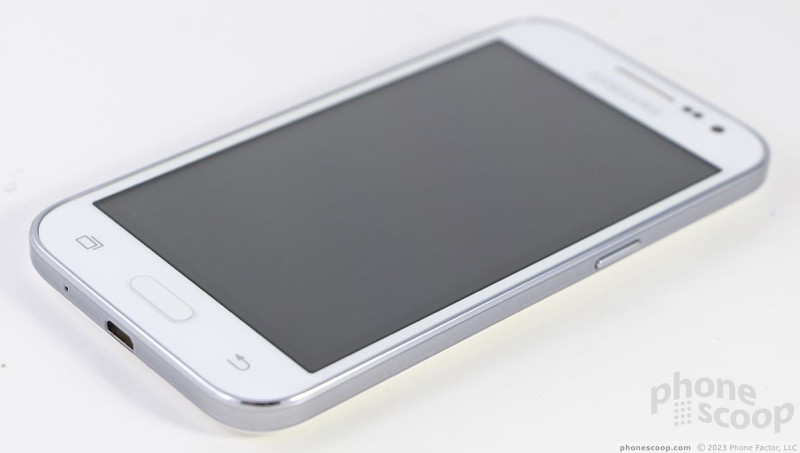
















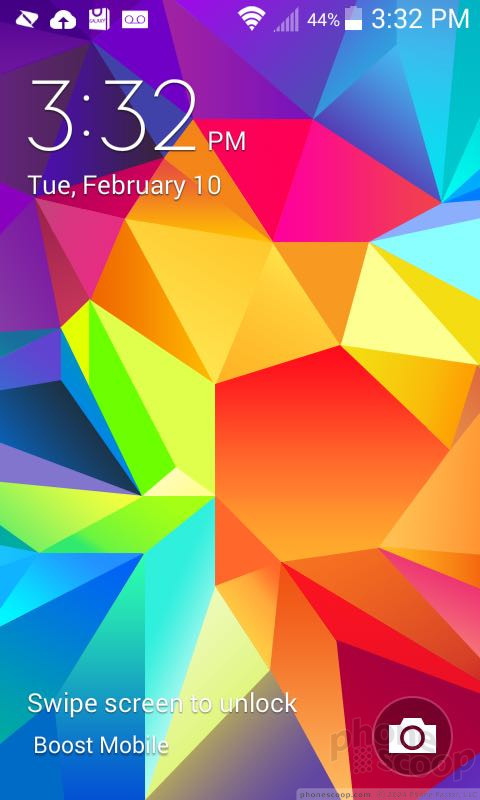




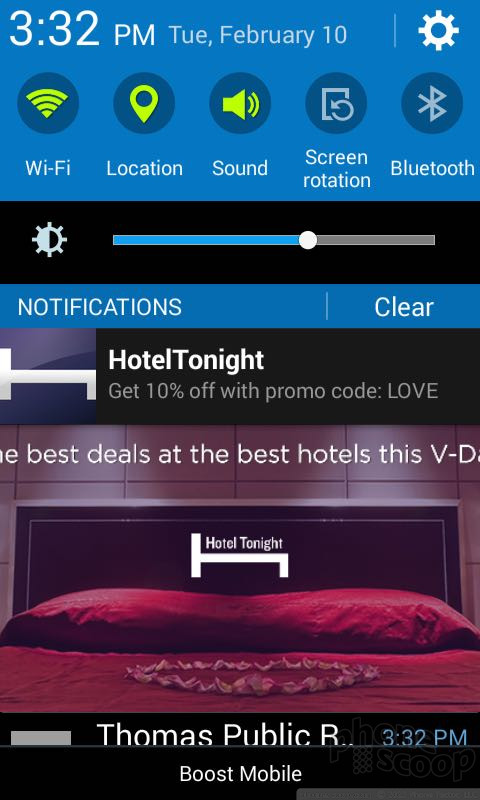








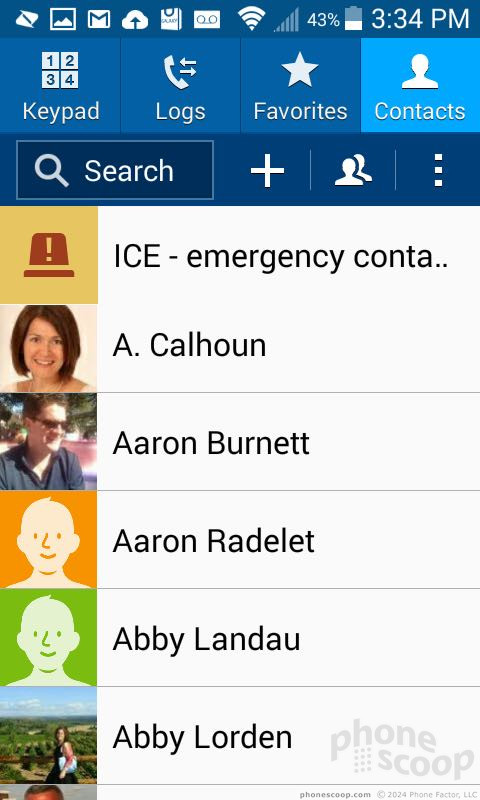



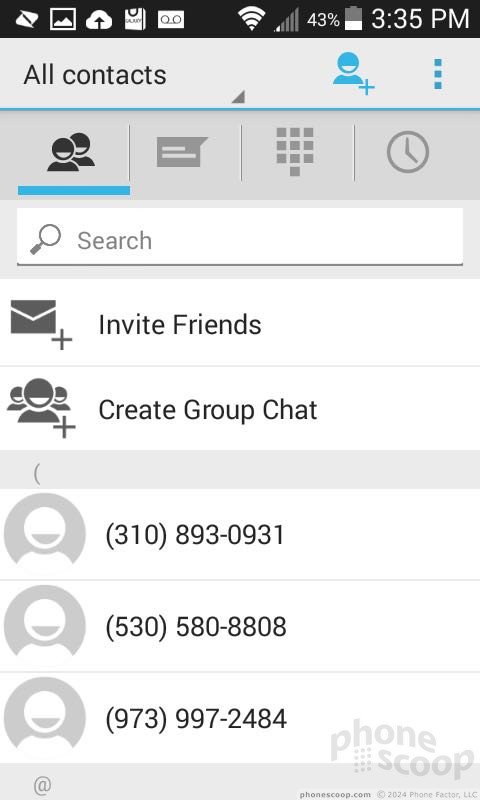






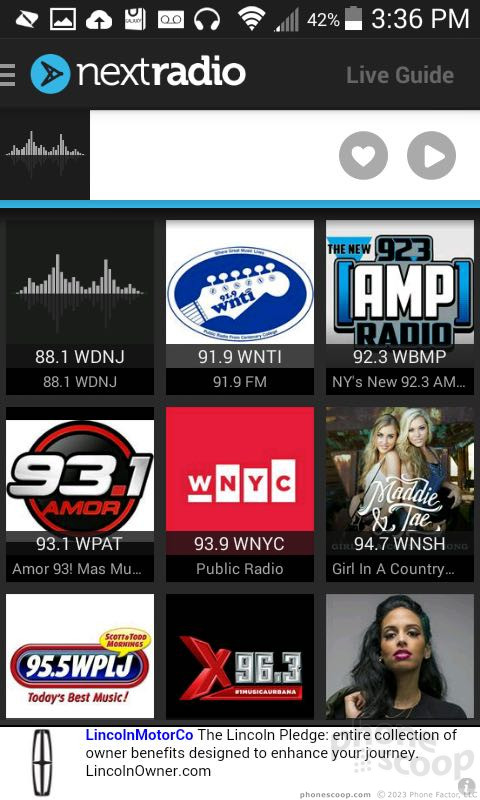






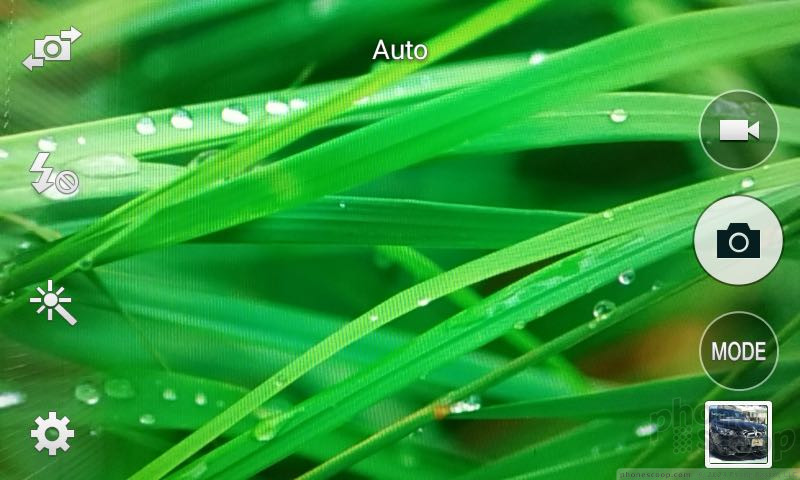






















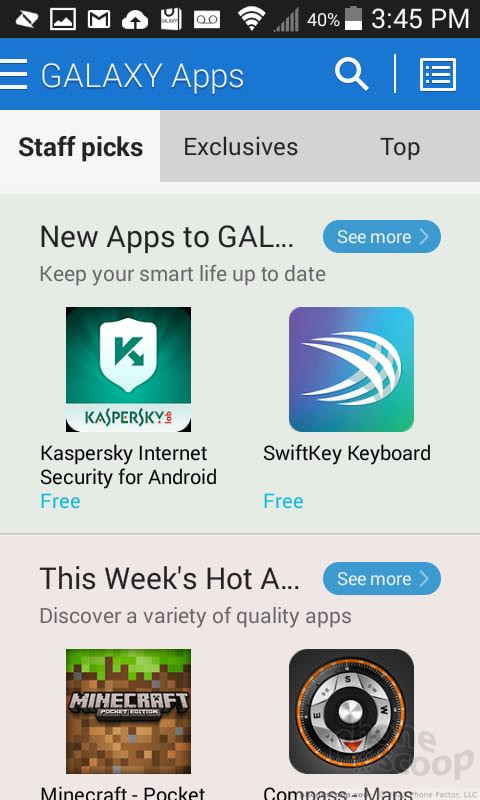









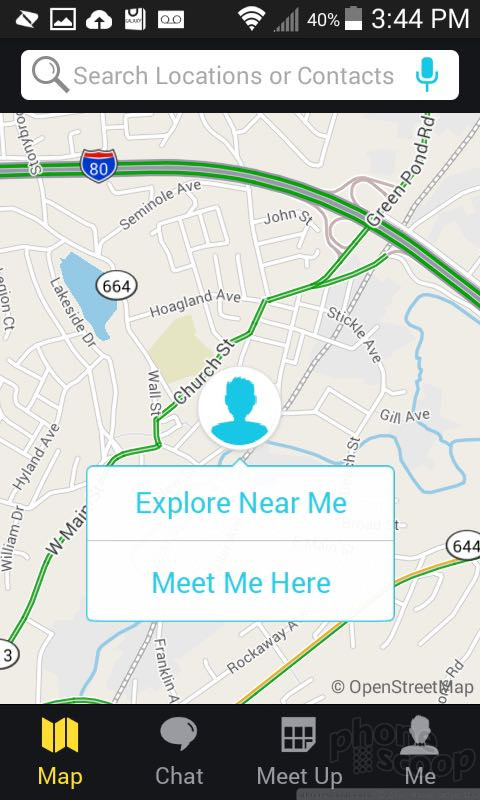




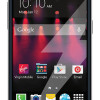 Virgin Announces Samsung Galaxy Core Prime
Virgin Announces Samsung Galaxy Core Prime
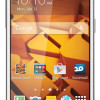 Boost's Samsung Galaxy Prevail Being Updated with LTE
Boost's Samsung Galaxy Prevail Being Updated with LTE
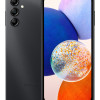 Samsung's Galaxy A14 Offers 5G for Less
Samsung's Galaxy A14 Offers 5G for Less
 Samsung Galaxy Prevail LTE / Galaxy Core Prime (CDMA)
Samsung Galaxy Prevail LTE / Galaxy Core Prime (CDMA)










